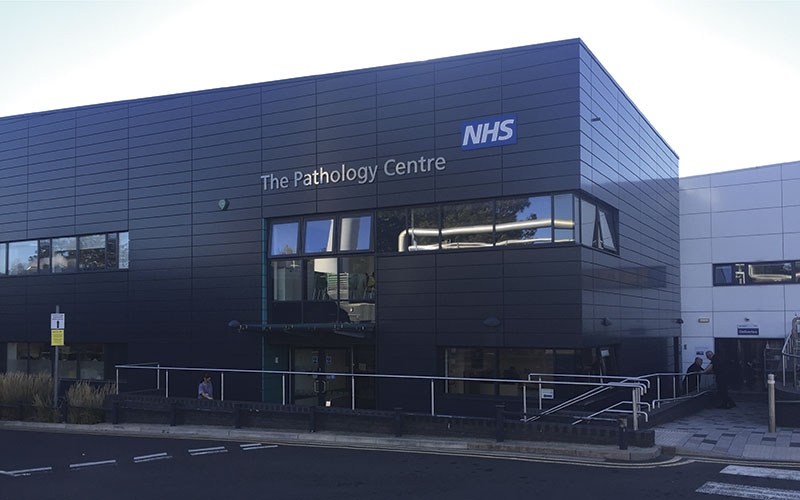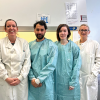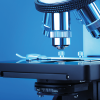Consultant Cellular Pathologist Paul Cross gives a guided tour of his lab at the Queen Elizabeth Hospital, Gateshead Health NHS Foundation Trust.

I’ve worked for over 25 years as a Consultant Cellular Pathologist in the department of pathology, based at the Queen Elizabeth Hospital (QEH), Gateshead. When I started, there were three Consultant Cellular Pathologists, now there are 16.
This reflects the huge increase in volume and scope of work, but also the move to laboratory consolidation over recent years.
In 2014, the pathology departments from three historically separate local hospitals (South Tyneside Hospital, Sunderland Royal Hospital and the QEH) merged, with the main laboratory being based at the QEH site, with hot labs at the other two sites and mortuaries on all three sites. It serves a population of about 650,000. This consolidation was not without its scientific, political and human issues, but I will not dwell on these as they have been written about previously.
Several years on, I feel privileged to work as a member of the team across pathology as a whole, but in particular my own area of cellular pathology. The pooling of the work from the three hospitals, all historically with different workloads and case mixes, has resulted in a medical and technical workforce with a great range of skills and interests. This means that on a day-to-day basis we can consult with each other and cover most pathological bases.
We work as flexible teams, with areas of interest and identified specialist leads, but have not moved to a formal specialist team reporting structure. This allows us to cross-cover and report across the case mix we have and even during holiday periods we can report without major diagnostic delay.
The surgical workload is about 48,000. We also cover post-mortems on two of the three sites, as well offering a cervical cytology and diagnostic cytology service. Multidisciplinary teams are held on all three sites, and use is made of the hospital shuttle service to ferry staff around, with two bookable electric cars. Cross-site working is essential to maintain links with the clinical teams on the three sites, but does lead to a dearth of pathologists physically in the department at times. The lab itself has about 60 staff, many part-time, to cover all aspects of processing and ancillary testing, both for histology and cytology. Staff are rotated between sections, which helps keep professional skills across the department evenly spread, allows for staff development, but also helps maintain interest. We are now far more heavily automated than ever before, and while water baths and microtomes are still evident, they are partly hidden by machinery more often seen in blood sciences.
We are of, course, part of the overall pathology laboratory, with about 10,000 samples per day arriving across the whole of pathology, across the four main disciplines. A dedicated pathology fleet of courier vans criss-crosses the local area picking up samples and dropping off supplies, and the sheer scale of planning this never ceases to amaze me.
The laboratory has successfully achieved UKAS/ISO accreditation, not bad for what is effectively a new laboratory only some four years old. The whole design principle of the laboratory is flexibility, as work and technology will inevitably change, but in what direction is difficult to fully predict. Whatever does happen, we have, I feel, the ethos and ability to adapt and deliver for many years to come.




